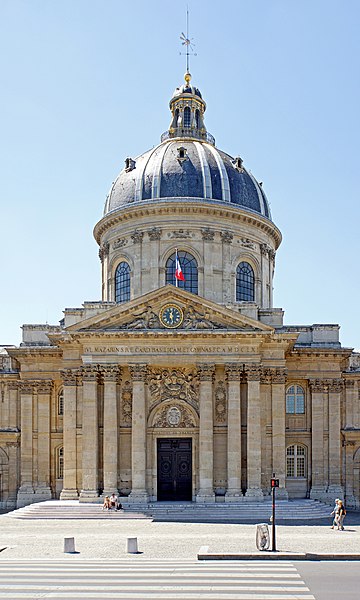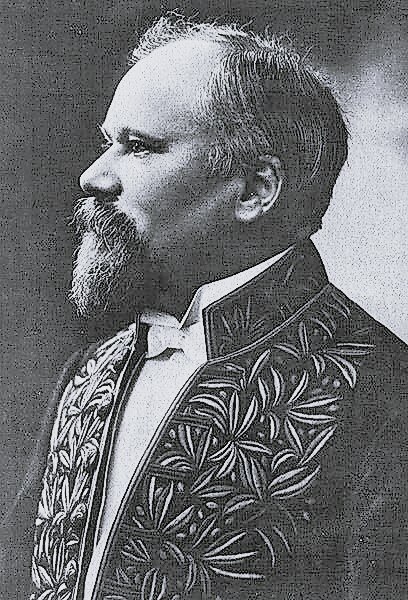The Institut de France is a French learned society, grouping five académies, including the Académie Française. It was established in 1795 at the direction of the National Convention. Located on the Quai de Conti in the 6th arrondissement of Paris, the institute manages approximately 1,000 foundations, as well as museums and châteaux open for visit. It also awards prizes and subsidies, which amounted to a total of over €27 million per year in 2017. Most of these prizes are awarded by the institute on the recommendation of the académies.
The Institut de France and Pont des Arts on the Seine
Esplanade in front of the institute, 1898
The Académie Française, also known as the French Academy, is the principal French council for matters pertaining to the French language. The Académie was officially established in 1635 by Cardinal Richelieu, the chief minister to King Louis XIII. Suppressed in 1793 during the French Revolution, it was restored as a division of the Institut de France in 1803 by Napoleon Bonaparte. It is the oldest of the five académies of the institute. The body has the duty of acting as an official authority on the language; it is tasked with publishing an official dictionary of the language.
Institut de France building
Cardinal Richelieu, responsible for the establishment of the Académie
Raymond Poincaré was one of the five French heads of state who became members of the Académie Française. He is depicted wearing the habit vert, or green habit, of the Académie.
Bernard Dujon and his colleague Eric Westhof, wearing the "Habit vert" of the Institut de France






